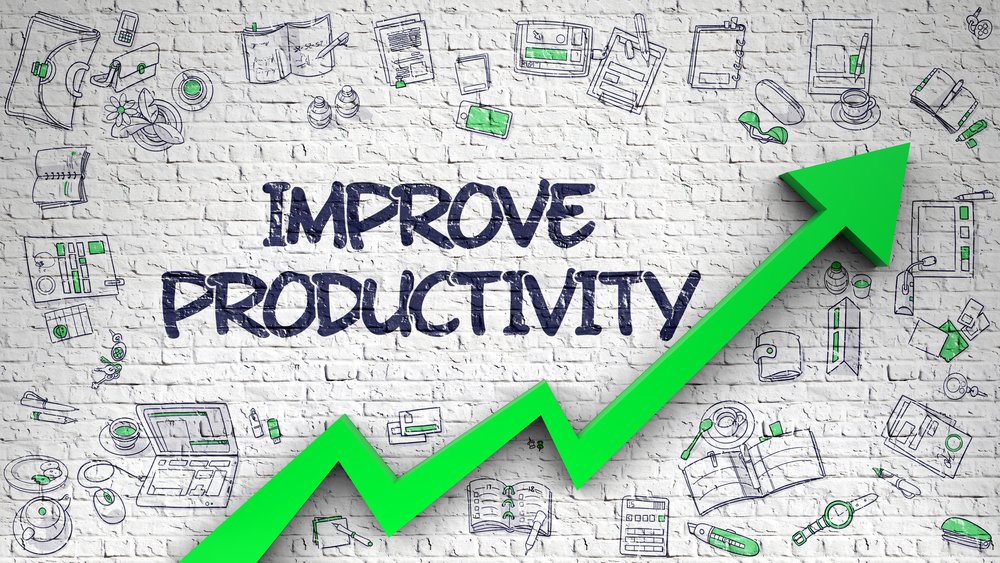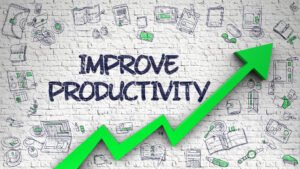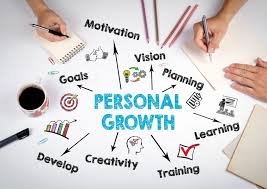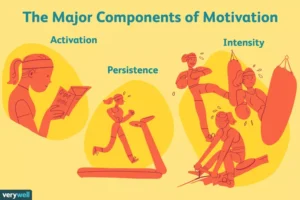Productivity is a measure of the efficiency of a person, machine, factory, system, etc., in converting inputs into useful outputs. It’s also a hot topic these days.
For many of us, productivity is an absolute good, an obvious goal for ourselves as much as for the organizations where we work.
It feels like a badge of honor, and our sense of productivity can seem like a direct reflection of our success in life. But, for everyone talking about it, we don’t all tend to share an understanding of what productivity means.
The truth is, checking off our to-do list is not what productivity is all about. While personal productivity contributes to business productivity, these two types of productivity are defined very differently.
When you and your boss have different definitions of what’s productive in the workplace, things can get confusing. And unproductive.
In this article, we’ll explore what productivity is and how that definition has changed, how it works for you and your organization, and how to be more productive.
What is productivity?
The Bureau of labor Statistics defines productivity as “a measure of economic performance that compares the amount of goods and services produced (output) with the amount of inputs used to produce those goods and services.”
When people think of “being productive,” they often think about what they’re personally getting done. For many people, that means checking things off the “to-do” list. That type of personal productivity reflects how efficient you are at completing tasks. But not all tasks are created equal.
Different perspectives on productivity
Politicians, economists, and pundits talk about it at a macro level. Business leaders and managers worry about it in terms of their teams and employees working in a hybrid environment. And most of us, individually, make some assessment as to whether we “felt” very productive on a given day.
Each of these examples incorporates a different view of productivity. Here are a few examples of different perspectives on productivity. Important to mention here is that when we’re talking about productivity, we’re talking about positive productivity, not
Personal productivity
Productivity can mean different things in different contexts, especially with the rise of knowledge work and automation. Personal productivity refers to how consistently and efficiently an individual completes tasks or accomplishes goals.
Understanding the different layers of productivity can help you see how your personal productivity at work contributes to your business’s productivity and maybe even how both relate to your country’s productivity.
National productivity
For countries, productivity measures how well they turn labor and materials (the input) into goods and services (the output, gross domestic product [GDP]). It’s a broad measure that reflects trends in policy and technology and indicates economic growth relative to other things happening in the macro-environment. This can ladder to a higher standard of living for the residents of that country.
Business productivity
For businesses, too, productivity measures how well they generate revenue from input, labor, and materials. Business productivity usually refers to productivity as revenue divided by hours worked. For company leaders, an aggregate productivity level isn’t likely to provide actionable insights, but it can help them see how they compare against the competition or other leading firms.
Organizational productivity
Productivity at the company level — revenue relative to employee labor hours in a quarter — can seem far removed from our own activities, which might see results or deliver value in a different timeframe.
What is productivity in the workplace?
Workplace productivity is the value each team brings to the success of the overall business. It measures the output of individuals or teams to better understand how an organization can optimize its workflows.
Why is productivity important?
Fostering employee productivity that drives business outcomes is an essential part of business success. And it also has a positive impact on employees.
- For businesses: Productivity growth signifies the health and growth of the company. A productive business can expand, offering new services and potentially lowering prices.
- For employees: Productivity is important because it keeps individuals Being productive allows us to manage our work, home lives, hobbies, and family commitments with ease and peace of mind.
How to measure productivity
Unfortunately, personal productivity, at work or in life, can be hard to pin down, especially now that many people don’t do repetitive tasks — it was much easier when productivity could be measured by how many widgets a person built per hour.
Personal productivity is a topic of some disagreement in the age of knowledge work. Creativity and innovation, even excellent customer service, don’t neatly sum up to an efficiency metric. Nonetheless, it’s useful to think about what productivity means in your role and type of work. Then try to set the conditions to improve it — whatever the metric:
- What is the appropriate way to assess quality or value?
- What is the relevant measure of quantity?
- What are the inputs we want to use most efficiently?
For your teams and for yourself, the most relevant output to think about is value. Productivity = (value of work) / (employee time, effort).
Value might seem hard to define, but you can start by thinking about outcomes. Something is valuable to you (or to a company) when it helps you achieve your desired outcomes. Not everything on your task list is equivalent in terms of the value it delivers to you or others.
This changes the way we think about productivity to incorporate how effectively an activity delivers value in addition to how efficiently we do that activity. In a company, the value of work is a function of how well the work aligns with the organization’s priorities, the quality it is executed at, and the efficiency with which it is done.
The benefits of improved productivity
Being more productive is a common goal, but it’s also a goal that many people struggle with.
Only 21% of UK office workers report that they are productive all day, and the average actual productive time in an 8-hour workday is 2 hours and 53 minutes.
Naturally, the challenges employees face with productivity ultimately reflect in the company’s overall output, too.
- Increased efficiency: By being more personally productive, people can complete their work efficiently, tackle errands quicker, and enjoy more free time.
- Improved employee well-being: Productivity can help employees enforce healthy work/life boundaries and feel more in control of their circumstances. Some people may even enjoy their work more when they’re productive, and they’re likely to feel less stressed, too.
- Improved individual and company performance: Traditionally, we associate productivity with performance. Each person’s productivity and performance contribute to business success, leading to lower prices, higher profitability, and potentially higher pay for employees.
- Enhanced scalability: When a business has high productivity levels, it uses its resources more efficiently and is poised for growth and expansion.
What are some examples of productivity?
Whether we’re considering personal productivity or business productivity, it always comes down to getting the most output (or benefit) from the input. For businesses, input can mean capital, materials, or labor cost. For people, input usually represents time, effort, and dedication.
Motivating employees is a key part of labor productivity, and being motivated and inspired contributes to your personal productivity.
There are many ways to foster motivation and increase productivity on a personal level and an organizational level.
For personal productivity, there are many techniques that can increase how much you get done in a day without compromising quality. Some popular ones include:
- Breaking large projects into smaller tasks
- Using the (work in short 25-minute intervals)
- Developing a restorative morning routine
- Prioritizing your to-do list to focus on the most important tasks
Businesses can use gamification to motivate employees and increase employee engagement.
When Microsoft they saw a 10% productivity increase in contact centers. Plus, 78% of their agents stated they felt empowered and encouraged to perform better at work.








